The third and final instalment of dairy farmer profiles in the Grass10 Farmer of the Year competition features John Trant from Kildare, John O’Sullivan and William Dennehy from Kerry and Bryan Daniels from Kilkenny.
The beef and sheep finalists will be profiled next week. The winners will be announced at an awards ceremony on 13 December.
Clongowes Wood, Co Kildare
John is the farm manger on the Clongowes Wood farm in Clane, Co Kildare. The farm is attached to the well-known boys’ secondary school, with rugby fields running adjacent to grazing fields.
John has been the manager on the farm for the last three seasons.
The farm consists of 116ha of a milking block and 40ha of an out-block. The whole farm stocking rate is 3.0LU/ha, with 325 milking cows, 161 yearling heifers and 85 in-calf heifers.
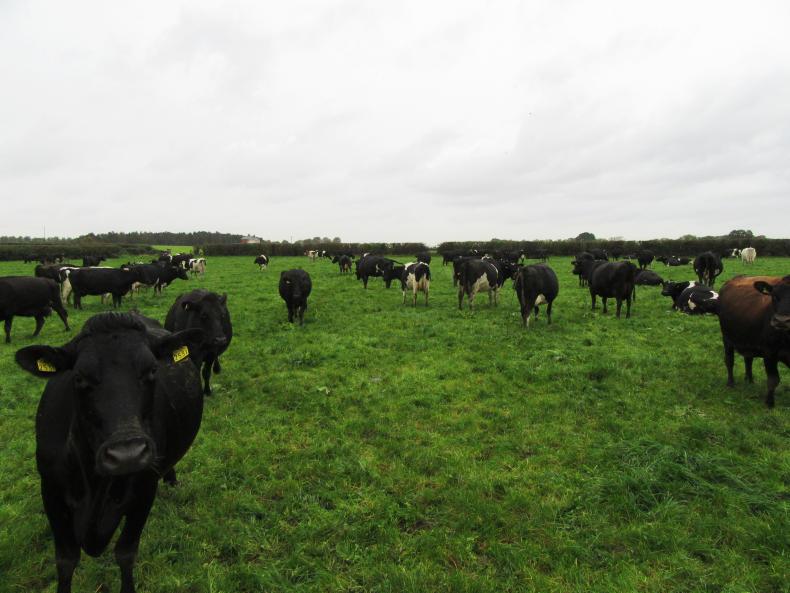
Grassland Farmer of the Year judging on Clongowes farm managed by John Trant.
All young stock are kept on the out-blocks, leaving the 325 cows on the milking platform at a stocking rate of 3.0LU/ha.
Over the last three years, the farm has grown an average 15t/DM/ha each year, achieving 9.6 grazings per paddock per year with John completing an average of 48 grass walks each year, so standards are excellent. John targets a pre-grazing yield during the year of 1,400kg to 1,500kg/DM/ha and tries to work off 36-hour grazings as much as possible during the summer.

Grassland Farmer of the Year judging on Clongowes farm managed by John Trant.
John says it is a very dry farm and once cows calve they generally go straight to grass and are kept out in the autumn for as long as possible.
The farm is nearly all index four for P with only one or two paddocks not. However, 30% of the farm is at index two for K, which is something John is aware of and consistently working on.
This year, John spread 30 units of urea in January and, from then on, all nitrogen spread on the farm was in the form of protected urea, with either potash or sulphur.
Castleisland, Co Kerry
Soil type on this Kerry farm is much different to that in Kildare. There’s just 8in of brown earth top soil covering grey clay on John O’Sullivan’s farm near Castleisland.
Testament to the quality of the farming is the fact that most people, upon driving into the farm, would think all the land is free-draining. It’s only when you walk the land that you realise the challenges it poses.
John is very much a numbers man. Next to the farm map is a list of paddocks with the percentages of perennial ryegrass in each paddock.
The perennial ryegrass score is done annually as part of the Teagasc heavy soils programme of which John is a member.

New roadway on John O'Sullivan's farm.
A paddock with a low level of perennial ryegrass raises a flag. Reseeding is usually the last port of call in such circumstances. The first thing to be looked at is soil pH.
John has spread over 200t of lime over the past two years, with 100t going out last year alone. The investment in lime has paid for itself as phosphorus and potash is now more readily available and grass growth has increased.
The farm has grown an average of 12.5t/ha over the last three years. The biggest effect of the extra yield has been that running low in silage is no longer a concern, with six months’ worth of silage for John’s 110 cows and replacements in stock.
Rainfall is high at over 1,300mm per year so infrastructure for grazing is essential.
Currow, Co Kerry
This Kerry farmer says he got the shock of his life in June 2010. I had to check if Kerry got knocked out of the Munster football championship but they hadn’t. The shock William refers to is that his farm stopped growing grass.
He says he took his eye off soil fertility and when the farm came under stress, growth collapsed.
A fertiliser plan was drawn up and he followed it to the last unit/acre. Today, the farm is humming, growing over 15.6t/ha on average over the last three years and William is back to just using maintenance fertiliser.
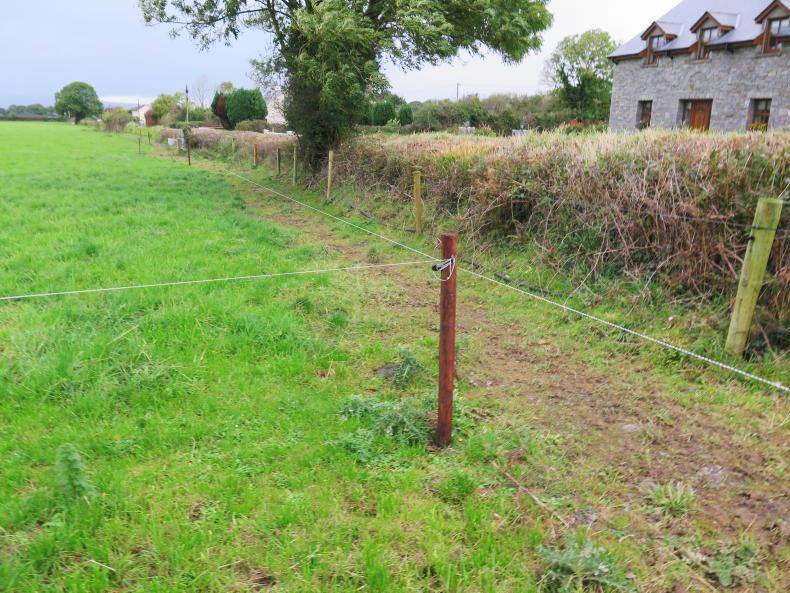
New cow path on William Dennehy's farm.
Eighty-seven cows were milked in 2019, up from 82 in 2018. The heifers have been contract-reared since 2013 so the 25ha around the parlour are just for milking cows and the 11ha up the road is just for silage. Overall stocking rate is 2.55 cows/ha. Performance is good, with the crossbred herd expected to produce over 500kg MS/cow from 750kg of meal.
Soil type on the Dennehy farm is good, with free-draining soils allowing for early turnout.
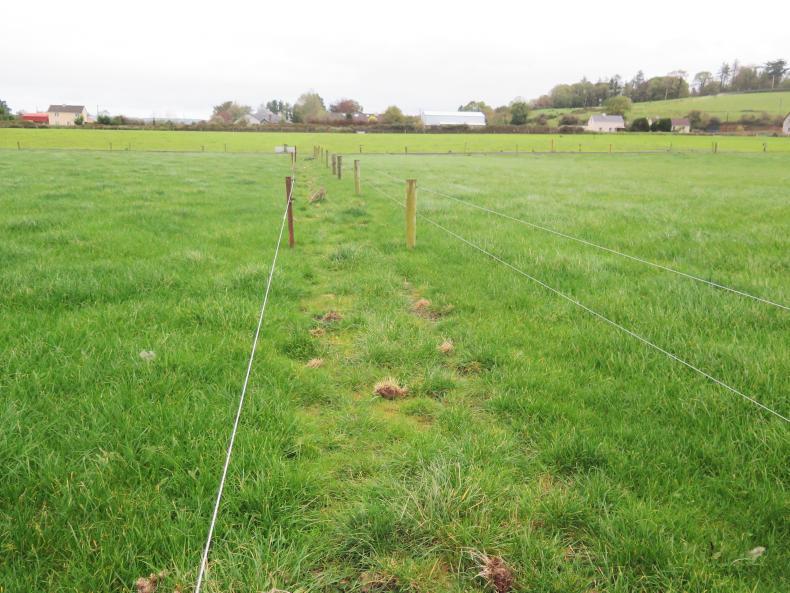
A cow path on William Dennehy's farm.
Willie has made big investments in grazing infrastructure to facilitate the early turnout. A new cow path, about 2m-wide, was recently constructed at the back of a series of paddocks, meaning there is improved access to all of the farm.
William has completed over 55 grass measurements on average over the last three years. Pre-grazing yield between May and August averages about 1,500kg/ha and William sets a target to have an average farm cover of about 150kg/cow during this mid-season.
Kilmoganny, Co Kilkenny
Bryan is the ninth generation of his family to farm at Kilmoganny. Despite the farm being located between 780ft and 1,000ft above sea level, the land is good quality and relatively free-draining.
The area around the farm is known as Black Bog and Bryan jokes that the name, along with the altitude, frightens most people away. To put the height in context, the top of nearby Sliabh na mBan mountain in Tipperary is 2,365ft.
Performance on this farm is excellent. While the altitude reduces grass growth rates at the shoulders, the summers more than make up for it, with Bryan recording growth rates in excess of 100kg/day for weeks on end.

Farm roadway on Bryan Daniels' farm.
Grass growth in May averaged 148kg/day, so Bryan says he needs the herd to be at full capacity to turn as much as possible of this grass into milk.
Bryan and his wife Gail will calve down 310 cows next year. The stocking rate on the milking block is 2.55 cows/ha and Bryan is not keen on pushing this too hard. Most of the land is around the parlour, so the Daniels can be flexible about land for the milking cows and land for the youngstock. Some of the youngstock are reared on outside land. One of the standout memories from the judges’ visit to this farm is the attention to detail around fertiliser usage. Bryan records everything that is spread in a foolscap page. Total nitrogen fertiliser spread in 2019 was 167kgN/ha across the milking block. Average grass growth over the last three years was an impressive 17.3t/ha. The herd of high-EBI black-and-white cows is on track to produce 460kgMS/cow from 430kg of meal.
Read more
Cork, Kerry and Cavan farmers in grassland competition
Grassland Farmer of the Year finalists
The third and final instalment of dairy farmer profiles in the Grass10 Farmer of the Year competition features John Trant from Kildare, John O’Sullivan and William Dennehy from Kerry and Bryan Daniels from Kilkenny.
The beef and sheep finalists will be profiled next week. The winners will be announced at an awards ceremony on 13 December.
Clongowes Wood, Co Kildare
John is the farm manger on the Clongowes Wood farm in Clane, Co Kildare. The farm is attached to the well-known boys’ secondary school, with rugby fields running adjacent to grazing fields.
John has been the manager on the farm for the last three seasons.
The farm consists of 116ha of a milking block and 40ha of an out-block. The whole farm stocking rate is 3.0LU/ha, with 325 milking cows, 161 yearling heifers and 85 in-calf heifers.

Grassland Farmer of the Year judging on Clongowes farm managed by John Trant.
All young stock are kept on the out-blocks, leaving the 325 cows on the milking platform at a stocking rate of 3.0LU/ha.
Over the last three years, the farm has grown an average 15t/DM/ha each year, achieving 9.6 grazings per paddock per year with John completing an average of 48 grass walks each year, so standards are excellent. John targets a pre-grazing yield during the year of 1,400kg to 1,500kg/DM/ha and tries to work off 36-hour grazings as much as possible during the summer.

Grassland Farmer of the Year judging on Clongowes farm managed by John Trant.
John says it is a very dry farm and once cows calve they generally go straight to grass and are kept out in the autumn for as long as possible.
The farm is nearly all index four for P with only one or two paddocks not. However, 30% of the farm is at index two for K, which is something John is aware of and consistently working on.
This year, John spread 30 units of urea in January and, from then on, all nitrogen spread on the farm was in the form of protected urea, with either potash or sulphur.
Castleisland, Co Kerry
Soil type on this Kerry farm is much different to that in Kildare. There’s just 8in of brown earth top soil covering grey clay on John O’Sullivan’s farm near Castleisland.
Testament to the quality of the farming is the fact that most people, upon driving into the farm, would think all the land is free-draining. It’s only when you walk the land that you realise the challenges it poses.
John is very much a numbers man. Next to the farm map is a list of paddocks with the percentages of perennial ryegrass in each paddock.
The perennial ryegrass score is done annually as part of the Teagasc heavy soils programme of which John is a member.

New roadway on John O'Sullivan's farm.
A paddock with a low level of perennial ryegrass raises a flag. Reseeding is usually the last port of call in such circumstances. The first thing to be looked at is soil pH.
John has spread over 200t of lime over the past two years, with 100t going out last year alone. The investment in lime has paid for itself as phosphorus and potash is now more readily available and grass growth has increased.
The farm has grown an average of 12.5t/ha over the last three years. The biggest effect of the extra yield has been that running low in silage is no longer a concern, with six months’ worth of silage for John’s 110 cows and replacements in stock.
Rainfall is high at over 1,300mm per year so infrastructure for grazing is essential.
Currow, Co Kerry
This Kerry farmer says he got the shock of his life in June 2010. I had to check if Kerry got knocked out of the Munster football championship but they hadn’t. The shock William refers to is that his farm stopped growing grass.
He says he took his eye off soil fertility and when the farm came under stress, growth collapsed.
A fertiliser plan was drawn up and he followed it to the last unit/acre. Today, the farm is humming, growing over 15.6t/ha on average over the last three years and William is back to just using maintenance fertiliser.

New cow path on William Dennehy's farm.
Eighty-seven cows were milked in 2019, up from 82 in 2018. The heifers have been contract-reared since 2013 so the 25ha around the parlour are just for milking cows and the 11ha up the road is just for silage. Overall stocking rate is 2.55 cows/ha. Performance is good, with the crossbred herd expected to produce over 500kg MS/cow from 750kg of meal.
Soil type on the Dennehy farm is good, with free-draining soils allowing for early turnout.

A cow path on William Dennehy's farm.
Willie has made big investments in grazing infrastructure to facilitate the early turnout. A new cow path, about 2m-wide, was recently constructed at the back of a series of paddocks, meaning there is improved access to all of the farm.
William has completed over 55 grass measurements on average over the last three years. Pre-grazing yield between May and August averages about 1,500kg/ha and William sets a target to have an average farm cover of about 150kg/cow during this mid-season.
Kilmoganny, Co Kilkenny
Bryan is the ninth generation of his family to farm at Kilmoganny. Despite the farm being located between 780ft and 1,000ft above sea level, the land is good quality and relatively free-draining.
The area around the farm is known as Black Bog and Bryan jokes that the name, along with the altitude, frightens most people away. To put the height in context, the top of nearby Sliabh na mBan mountain in Tipperary is 2,365ft.
Performance on this farm is excellent. While the altitude reduces grass growth rates at the shoulders, the summers more than make up for it, with Bryan recording growth rates in excess of 100kg/day for weeks on end.

Farm roadway on Bryan Daniels' farm.
Grass growth in May averaged 148kg/day, so Bryan says he needs the herd to be at full capacity to turn as much as possible of this grass into milk.
Bryan and his wife Gail will calve down 310 cows next year. The stocking rate on the milking block is 2.55 cows/ha and Bryan is not keen on pushing this too hard. Most of the land is around the parlour, so the Daniels can be flexible about land for the milking cows and land for the youngstock. Some of the youngstock are reared on outside land. One of the standout memories from the judges’ visit to this farm is the attention to detail around fertiliser usage. Bryan records everything that is spread in a foolscap page. Total nitrogen fertiliser spread in 2019 was 167kgN/ha across the milking block. Average grass growth over the last three years was an impressive 17.3t/ha. The herd of high-EBI black-and-white cows is on track to produce 460kgMS/cow from 430kg of meal.
Read more
Cork, Kerry and Cavan farmers in grassland competition
Grassland Farmer of the Year finalists










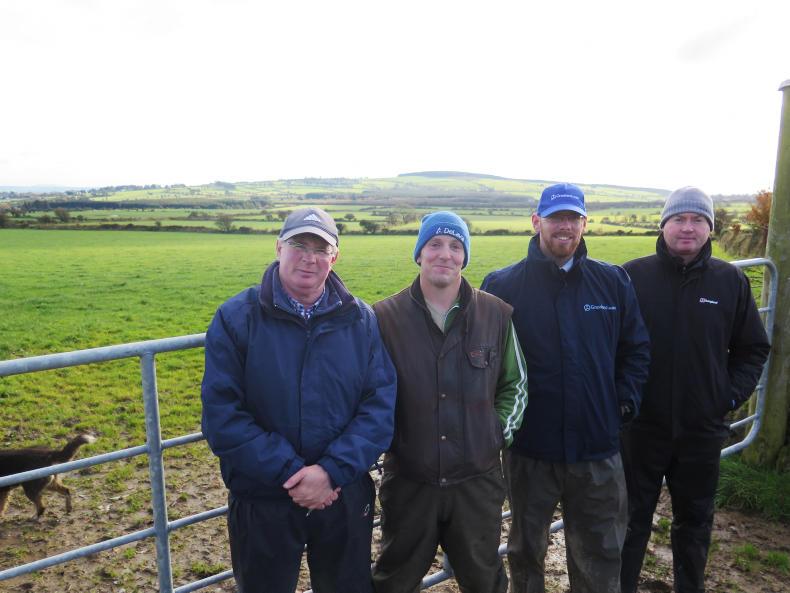

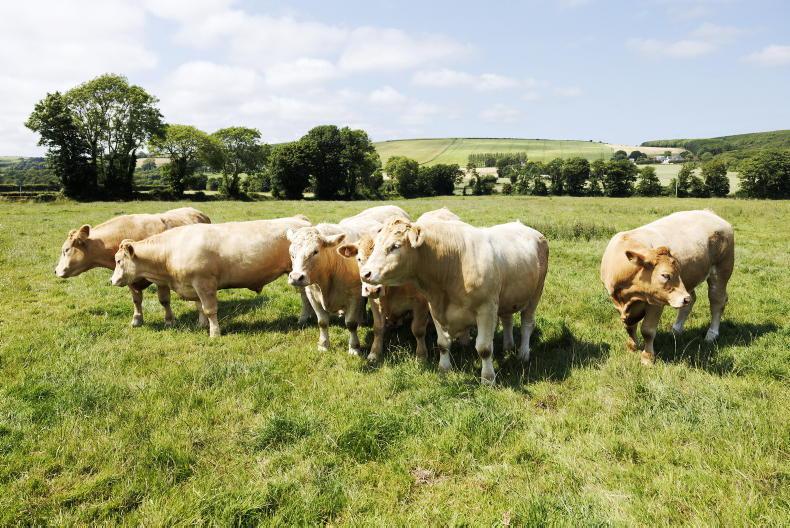
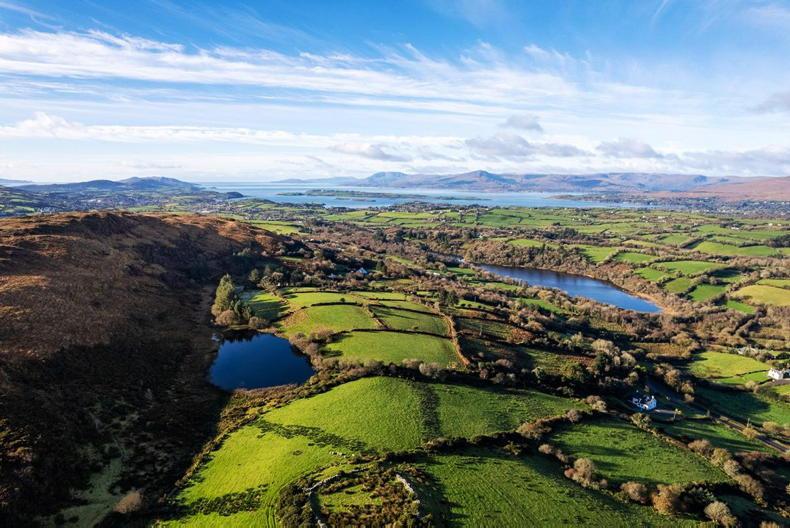
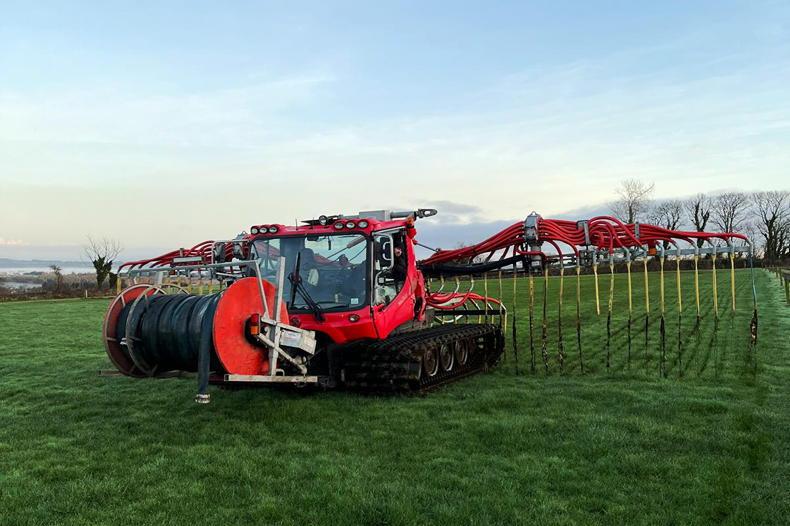
SHARING OPTIONS